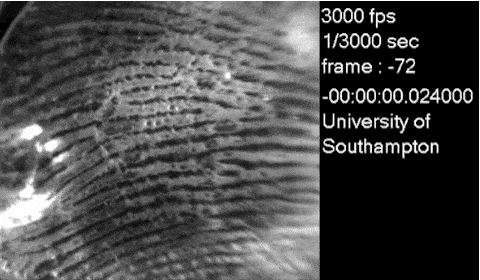Usually, we have to use all sorts of disinfectants, soaps and detergents to scrub away smudge, be it sticky, oozy or greasy. This is not only annoying during housekeeping, but also following medical procedures when instruments have to be cleaned. Researchers at University of Southampton have been working for several years on a different kind high tech solution. They developed a gun-shaped device called the StarStream equipped with a special nozzle that injects water bombarded with ultrasound waves. The mix is so powerful that virtually any kind contamination can be removed.
In a video series posted on YouTube, the researchers demonstrated how the StarStream scrubs dirt and bacteria away from teeth, tissue from bone or grease from metals.
The device is appealing for its simplicity: it only needs room-temperature sterile water and an ultrasonic source. No need for pumps or additional chemicals. The way it works so well against sludge is owed to a physical phenomenon called cavitation. During this process the ultrasounds beamed at the right frequency create bubbles in the water which burst at high pressure and temperature over a small surface area and in a short while. This kind of temperature and pressure is enough to blow away most contaminants that cover a surface. A by-product of cavitation is sonoluminescence, in which water bubbles bombarded with sound actually emit light. If you look closely you’ll notice the shining bits of light when the device is powered on.
“This study illustrates the potential in harnessing an ultrasonically activated stream to remove biological contamination including brain tissue from surgical stainless steel substrates, S. epidermidis biofilms from glass, and fat/soft tissue matter from bone structures with considerable basic and clinical applications,” they write.
For now, the StarStream is geared towards medical use, but personally I feel there’s a potential in the consumer market as well. I know I could use one.










